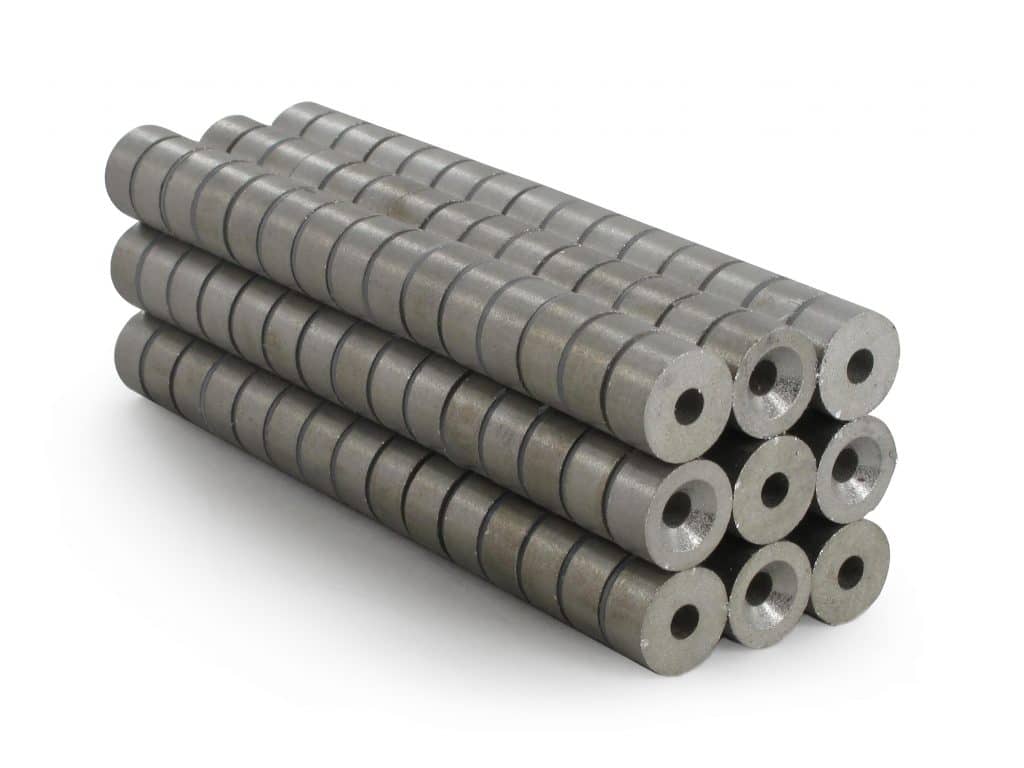Why Are Strong Magnets Called Rare Earth?
By Paul Fears | 10 May 2017
The first ‘Rare Earth’ Magnet was developed in the 1960s based on work done by Karl Strnat and Alden Rey at Wright-Patterson Air Force Base and the University of Dayton. The development of the Samarium–Cobalt Magnet (made of an alloy of samarium and cobalt SmCo) was a major advancement in magnet technology. For the first time, there was an ultra-strong permanent magnet with far greater magnetic properties than Ferrite or Alnico.

The Samarium-Cobalt Magnet was classified as a ‘Rare Earth’ Magnet because the Samarium was a Rare Earth Element.
What Are Rare Earth Elements?
A Rare Earth Element (REE) or Rare Earth Metal (REM), as defined by IUPAC, is one of a set of seventeen chemical elements in the periodic table.
Rare earth elements are cerium (Ce), dysprosium (Dy), erbium (Er), europium (Eu), gadolinium (Gd), holmium (Ho), lanthanum (La), lutetium (Lu), neodymium (Nd), praseodymium (Pr), promethium (Pm), samarium (Sm), scandium (Sc), terbium (Tb), thulium (Tm), ytterbium (Yb) and yttrium (Y).
In 1982, General Motors and Sumitomo Special Metals developed the Neodymium ‘Rare Earth’ Magnet (also known as NdFeB, NIB or Neo magnet). Since its development, the Neodymium Magnet has become the most widely used permanent Rare Earth magnet on the planet. The alloy is a composition of the Rare Earth element, Neodymium, with iron and boron. Neodymium Magnets are the strongest permanent magnet commercially available and are used extensively in our everyday life. These ‘Rare Earth’ Magnets are key constituent parts in motors, mobile phones, computer hard drives, cars, defense systems, and even fridge magnets.
Presently, the vast majority of Rare Earth Oxides come from China. In 2010, 95% of the global production was Chinese. New applications and an increased demand for ‘Rare Earth’ Magnets (e.g Wind Turbines) has strained their supply. There is growing concern that the world may soon face a shortage of the rare earths as the demand is expected to exceed supply by 40,000 tonnes annually unless major new sources are developed.
And there is no predicted fall in demand for the most common ‘Rare Earth’ Magnet, Neodymium. The Magnet’s versatility means that it is available in a wide range of shapes and sizes, from discs, to slugs, to blocks.
For more information on ‘Rare Earth’ Magnets such as Neodymium Iron Boron and Samarium Cobalt, please contact us on:
Phone: +44(0)1442 875081
Email: sales.berkhamsted@buntingmagnetics.com



